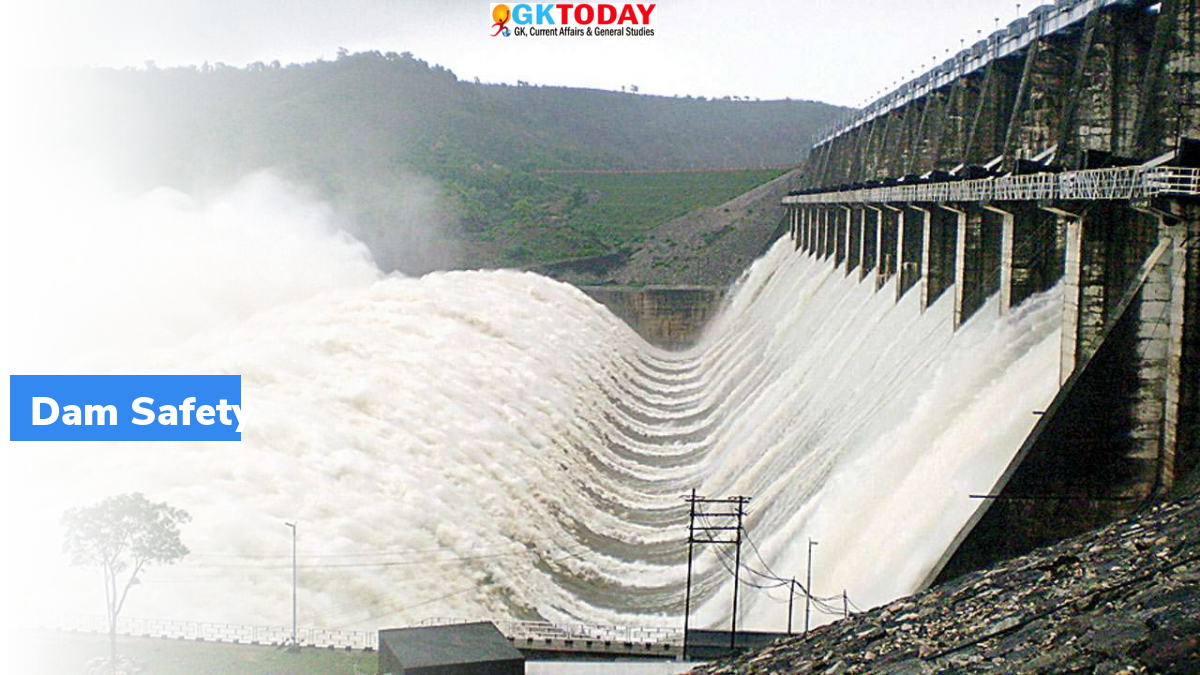Dam Safety Act, 2021
Parliament on December 8, 2021, passed the Dam Safety Act. It provides for surveillance, inspection, operation and maintenance of dams, for prevention of dam failure related disaster, and also makes provision for institutional mechanisms to ensure their safe functioning.
History of Dam Safety Law
- The government decided to draft India’s first Dam Safety Law, way back in 1987.
- The Dam Safety bill was first introduced in the Lok Sabha in 2010, but was withdrawn, following several changes recommended by the Standing Committee.
- A modified bill was introduced subsequently, but it lapsed after the dissolution of the 15th Lok Sabha. The bill was introduced afresh in the lower house again in 2019.
Jurisdiction of Parliament
- Though water is under the state list, the Centre brought the legislation under Article 246 of the Constitution, read with Entry 56 and Entry 97 of List I in the Union list.
- Article 246 empowers Parliament to legislate on any matter enumerated in List I of the Union list in the Seventh Schedule of the Constitution.
- Entry 56 allows Parliament to make laws on the regulation of inter-state rivers and river valleys, if it declares such regulation to be expedient in public interest.
- Entry 97 allows Parliament to legislate on any other matter, not enumerated in List II or List III, including any tax not mentioned in either of those Lists.
Need for Dam Safety Law
- According to the Central Water Commission (CWC), the safety law is important because dams are ageing and they are a cause of concern for people living in the areas nearby.
- Safety of dams becomes important in the emerging scenario of India’s water crisis, linked with its growing population, as also the climate change.
- It is also necessary to safeguard the huge public investment in this critical public infrastructure, as also, for ensuring continuity of benefits derived from dams.
- According to Jal Shakti Ministry around 40 dams had collapsed in the country since Independence. Safety law is necessary to prevent such mishaps.
- Around 18 States and five Dam Owning Organizations have created their own Dam Safety Organizations (DSOs). But there is a need for Central Law.
Monitoring structure
- To ensure dam safety, there will be four layers of monitoring, two at the central level and two at the state level.
- A National Committee on Dam Safety (NCDS) will be set up at the Central level, which will be headed by Central Water Commission (CWC) chairman, and include 10 representatives of the Central Government, not below the rank of Joint Secretary.
- A National Dam Safety Authority (NDSA) will implement policy, guidelines and standards, evolved by NCDS.
- At the state level, there will be a State Dam Safety Organization (SDSO), which shall keep perpetual surveillance, carry out inspections and monitor the operation and maintenance of specified dams falling under their jurisdiction.
- States will also have to constitute a State Committee on Dam Safety.
Other provisions
The bill covers dams which are above 15 metres in height or between 10 metres and 15 metres in height and satisfy at least one of specified conditions. The bill provides for stringent penalties in case of violations, including two years of jail term.


